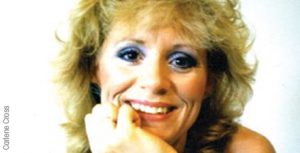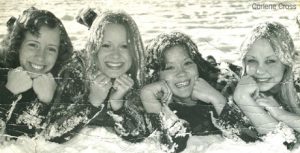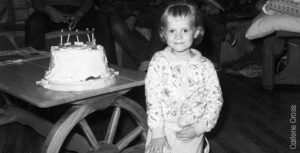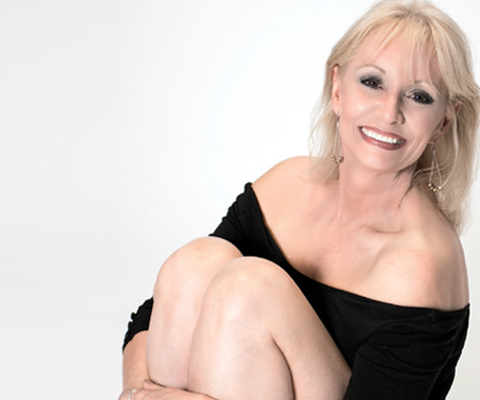I noticed the changes around 50. I had always been physically strong; growing up, my father subscribed to the notion that one good Montana farm kid could do the work of a strapping cowboy any sweltering afternoon. By the age of 10, I was bucking bales, changing sprinkler pipes, stacking 50-pound grain sacks, and chasing cattle across miles of hill country.  I took that effortless physicality into high school track, cheerleading and cross country. After my children were born, I taught aerobics and body building and fell in love with yoga. Throughout life I lifted couches and climbed steep roofs without ever considering that someday my body might not do what my mind dictated.
I took that effortless physicality into high school track, cheerleading and cross country. After my children were born, I taught aerobics and body building and fell in love with yoga. Throughout life I lifted couches and climbed steep roofs without ever considering that someday my body might not do what my mind dictated.
When I ran, I had to consider absurd things like my knee caps.
Then it seemed that I crossed over some invisible threshold, and, suddenly, opening vacuum-sealed jars or lifting boxes of history books no longer came with such ease. When I ran, I had to consider absurd things like my knee caps. At first I refused to acknowledge the changes. I completely rejected the idea that I would ever feel like Jack Gaston, an old homesteader who came into our farmhouse slapping his Stetson against his bony hip to knock the blizzard off. He had off-kilter, crazy-as-the-wind eyes and an arthritic back that made him look like a perching raven. Even after he shook the snow from his brittle limbs, his pencil-thin legs kept wobbling this way and that until he made his way over to the kitchen table. It made me nervous that he kept trembling even after he’d slumped into the chair, looking as though he was trying to shiver himself back to life.
“Shore is cold,” old Gaston would say. “Makes ya pine for the thaw.”
I continued to think about Gaston until one day I phoned my mother. “How old was Jack Gaston when I was a kid?”
“Oh about 60,” she said.
“60?” I hollered back.
“I don’t know; maybe his late 50s.”
My mind froze, struck numb by the realization that this could be me in the not-too-distant future. I immediately began eating more blueberries and fermented sauerkraut. I purchased a scandalously expensive Lancome eye cream and signed up for advanced Pilates. But the transition also made me consider a more esoteric question: Was the I that was me entirely the sum of my physical parts? Or was this earthly form simply the vehicle that transported my spirit through life?
I realized how strongly I identified with the agile girl who could pull, lift and pirouette her way through life.
Although the question was philosophical, for me it was also bone-chillingly practical. If this body was all that I had, a certain dread would accompany aging. My loss of strength would signal a gradual forfeiture of the physical hold that I had always exerted over life and, with it, any power I had to control my destiny. I realized how strongly I identified with the agile girl who could pull, lift and pirouette her way through life. Once she was gone, who would be left?
 The answer did not come to me through the same philosophical reasoning that posited it, but again through my physical body. Although I was not a seasoned meditator, I practiced it enough to know the feeling of pure quiet when the flesh and bones of my being dropped away. In those moments, I knew something remained. This me did not have a face or a body. It was not the farm girl or the cheerleader or the aerobics instructor. It did not share the concerns of this world. It was the consciousness that remained constant in the flood of shifting circumstances, wins and losses, joys and grief — all of life’s ego experiences.
The answer did not come to me through the same philosophical reasoning that posited it, but again through my physical body. Although I was not a seasoned meditator, I practiced it enough to know the feeling of pure quiet when the flesh and bones of my being dropped away. In those moments, I knew something remained. This me did not have a face or a body. It was not the farm girl or the cheerleader or the aerobics instructor. It did not share the concerns of this world. It was the consciousness that remained constant in the flood of shifting circumstances, wins and losses, joys and grief — all of life’s ego experiences.
In those moments of bliss, I felt my soul rising above the fray into indefinable, noiseless peace. I followed a light paling to a golden blanket along the horizon. Not held by continents of geography, history or time, I felt released from this material shell.
Not that I am going to give up trying to stay in good condition.
Scientific materialism has pooh-poohed the idea of the human spirit, especially one that, after death, could exist independent of brain matter. Mystics like Teilhard de Chardin have been dismissed as weak-minded (even though de Chardin was a respected paleontologist/scientist himself). When the body dies, science insists, our awareness goes with it. However, in the past few years and within its own ranks, this paradigm has been assaulted. The latest dissenter is Eben Alexander. A highly trained neurosurgeon, Alexander was a steadfast skeptic until his own Near Death Experience (NDE). In 2008, his brain was attacked by a rare form of meningitis, and it completely shut down. After seven days, his doctors contemplated ending life support. Then he suddenly awoke. Soon he was telling the unlikely tale of cherubic beings, divine hosts and heavenly realms. Even more extraordinary was his new-found insistence on the immortality of human consciousness. He now has taken ranks with a growing cadre of medical doctors (along with thousands of common folk) who have adopted a radical change in worldview since their own NDEs.
For me, I do not find confirmation of the spirit in these metaphysical memoirs, even though I find them fascinating. I experience it when I meditate. It’s why as I grow older I practice it more. As I become more acquainted with the me beyond me, my fear of growing older subsides and it is replaced by a feeling of anticipation for the adventure ahead.
 Not that I am going to give up trying to stay in good condition. I still juice my organic vegetables every morning and take my antioxidant vitamins, but out of responsible ownership, like you’d attempt to keep your ’57 Chevy running on all cylinders. And I don’t yet feel like Jack — not because of my longevity regime but because I haven’t shared his lifelong habit of chewing snuff, throwing himself off rodeo broncos, or being run over by 500-pound farm animals.
Not that I am going to give up trying to stay in good condition. I still juice my organic vegetables every morning and take my antioxidant vitamins, but out of responsible ownership, like you’d attempt to keep your ’57 Chevy running on all cylinders. And I don’t yet feel like Jack — not because of my longevity regime but because I haven’t shared his lifelong habit of chewing snuff, throwing himself off rodeo broncos, or being run over by 500-pound farm animals.
I am aging, nonetheless. For now, I continue to do it gracefully, without clinging to this flesh, however the process unfolds. Remembering that I am more than the sum of my physical parts makes it easier.




Editors Note